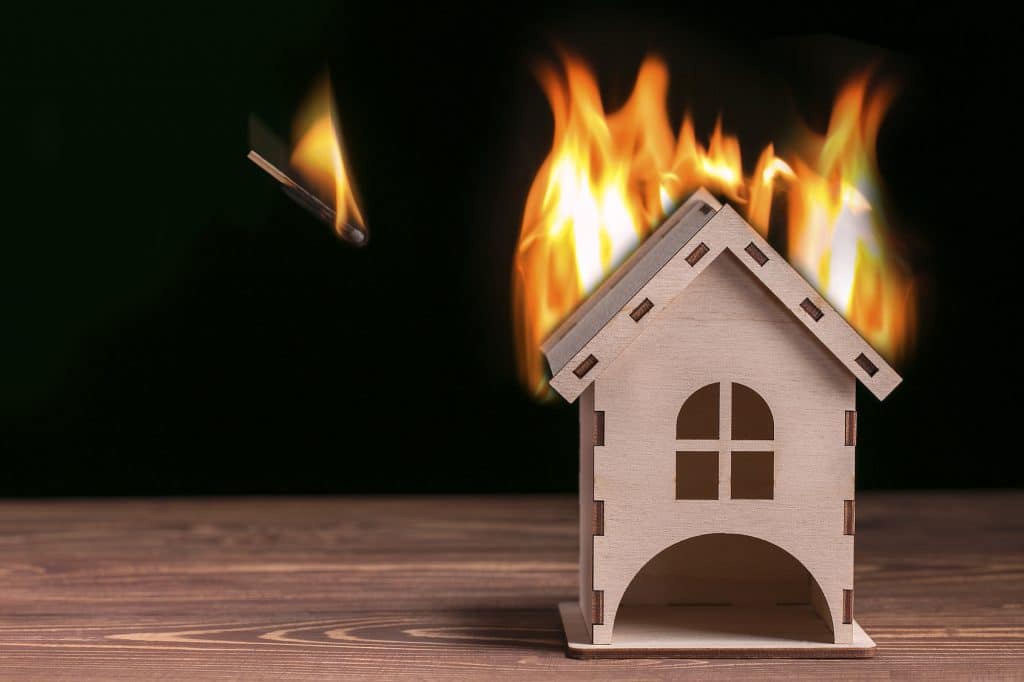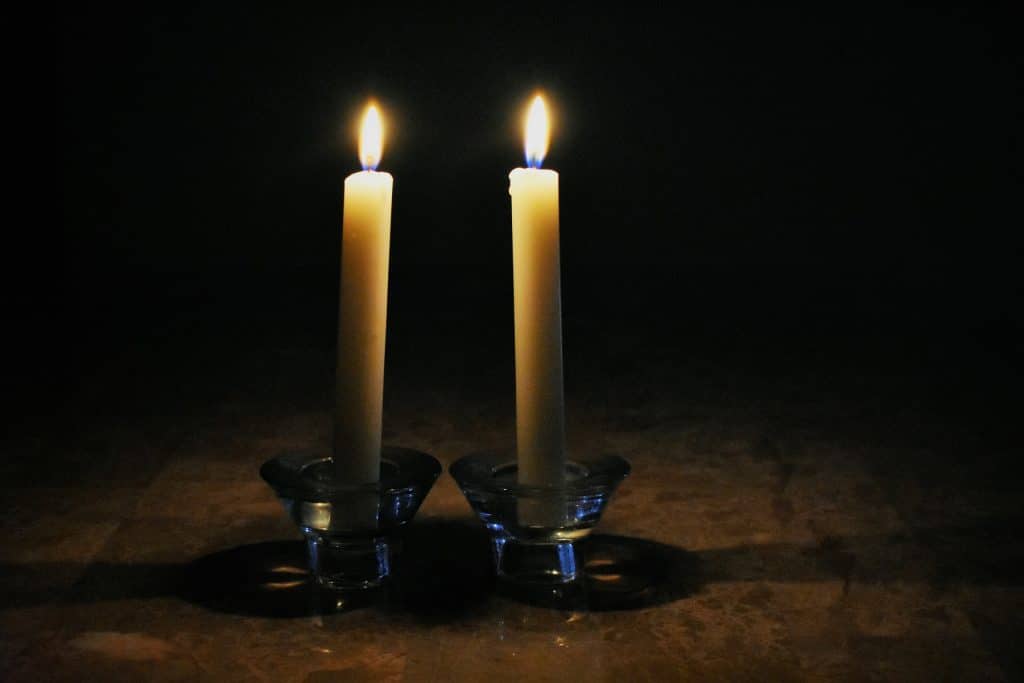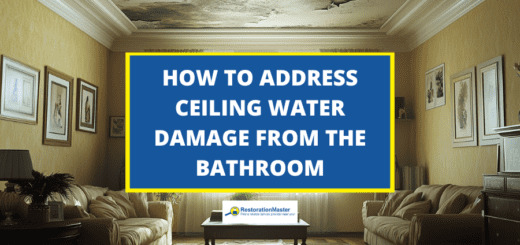Safety Tips to Prevent Fires from Candles
Candles add a relaxing touch to a home’s atmosphere, but according to the National Fire Protection Association, they’re also the cause of nearly 10,000 residential fires every year. Follow these fire safety tips to enjoy the beauty of an open flame without the danger of a candle fire.
Tips to Prevent Fires from using scented candles
- Always burn candles in well-ventilated rooms and don’t burn too many in a small room with limited air exchange.
- Never burn candles in rooms with drafts, vents, fans, or air currents. This leads to uneven burning, flare-ups, and sootSoot is fine black particles composed of carbon and other ma... More formation.
- Keep candles at least a foot away from anything flammable, such as paper, fabric, curtains, or furniture.
- Burn candles in stable holders and place them on sturdy, level surfaces that are heat resistant. A taper on a delicate table may look lovely, but it’s a disaster waiting to happen.
- Keep candles at least three inches apart so they won’t fall on one another while burning. If you need candles closer for a decorating reason, use battery operated flameless ones.
- Keep candles out of the reach of children and pets. They can easily knock over a candle and spill hot wax on themselves or ignite themselves or nearby furnishings. Teach children candle safety by showing them how to extinguish flames correctly and to do so before moving a candle.
- Never leave a lit candle unsupervised; if you leave the room, blow it out. Don’t go to bed with a candle burning because it’s too easy to fall asleep before you blow it out.
- Extinguish candles before they’ve completely burned down. Container candles should still have a half inch of wax, while pillars and tapers should be snuffed when they get down to about two inches.
- Never move burning candles. Melted wax spills easily and causes injuries. People may use candles during power outages in the movies, but it’s much safer to use flashlights and lanterns.
- Consider a safer alternative. Battery operated flameless candles come in a wide variety of shapes and sizes. Some even have aromatherapy and remotes. Children and pets still have to be supervised, but to ensure that they don’t break the candles.
How to light a scented candle without setting off an alarm?
Before burning
- Cut the wick to the length indicated on the candle’s label each time before burning. Long or crooked wicks can cause inconstant burning, drips, or flares.
- Light a candle in a well-ventilated room
- Place the candlestick on a stable, heat-resistant surface
- Keep the wax surface free of wicks, matches, and debris
While burning
-

Never touch or move a burning candle
- Do not light the candle when the wax is exhausted. To be safe, stop burning a candle when there’s only 1.5cm of wax remains.
- Extinguish the candle if the flame becomes too big or flickers continuously. Let the candle cool, cut the wick, and check before re-lighting.
- Always keep the candle within your sight. If you want to leave the room, be sure to blow out all the candles first.
To extinguish a candle fire.
- Use the cover to extinguish the candle or a special tool.
- Never use water to extinguish a candle. Water can cause the hot wax to splatter and possibly break glass containers.
- Make sure the candle is completely out, and the wick is no longer glowing before leaving the room.
- Please do not touch or move the candle until it has cooled completely
How to light a scented candle and maintain the fragrance?
1. Light a candle using a lighter or match
For the first burning, the wax should be completely melted on the candle’s surface with a depth of about 1cm. The time is about 1-2 hours (depending on the candle size).
Before lighting the candle, use scissors to cut the wick to about 0.4-0.6cm long so that the flame burns constantly and moderately. It is recommended to use candlewick scissors to cut correctly (blow out the candle before cutting the wick).
Next time you burn scented candles, you must ensure that the candle melts evenly to the sides to avoid indenting the candle which keeps the scent from spreading. Doing this ensures that the melting point of all the wax in the jar is even. It avoids the problem of not burning all the wax and reducing the scent in subsequent uses.
2. Use a candle warmer lamp to safely keep the fragrance
Open the candle jar lid and place the jar into the candle warmer lamp. Typically, if you burn the candle for 2 hours, the fragrance will last for 6 to 8 hours (the colder the space, the stronger the scent will be and the longer it will linger)
After a period of use, the essential oils in the candle wax are evaporated, leading to a weakened fragrance. In this case, you should put out the fire and discard the liquid wax on the surface of the candle. Then continue to burn the wax that still contains essential oils and enjoy the fragrance.
The candle’s surface concaving around the wick is an inevitable situation when burning candles. In this case, leave the candle jar under the candle warmer lamp for about 30 minutes. The heat from the lamp will melt the upper layer of the candle evenly, and the candle’s surface will become flat. If you don’t have a candle warmer lamp, you can put the candle in the microwave and cook for about 2 minutes to melt the candle’s surface.
3. Keep scented candles away from sunlight
Keep your candles in a cool place and out of direct sunlight when not in use. This will increase the lifespan and keep the candle scent for a long time.
Local Fire RestorationRestoration is the process of returning a property to its pr... More
 If you need fire damage restorationFire damage restoration is the process of repairing and rest... More services for your home or business in your local area, contact a local disaster restoration company to help. Their technicians will work with you to develop a comprehensive restorationRestoration is the process of returning a property to its pr... More plan to get your property restored to its original condition. They have advanced training and use only the most effective products and equipment available to the trade to clean and restore your home or commercial property and its contents quickly and efficiently.
If you need fire damage restorationFire damage restoration is the process of repairing and rest... More services for your home or business in your local area, contact a local disaster restoration company to help. Their technicians will work with you to develop a comprehensive restorationRestoration is the process of returning a property to its pr... More plan to get your property restored to its original condition. They have advanced training and use only the most effective products and equipment available to the trade to clean and restore your home or commercial property and its contents quickly and efficiently.
Fire damage restorationFire damage restoration is the process of repairing and rest... More costs vary, depending on the extent of the damage. According to HomeAdvisor.com, the national average for fire and smoke restorationRestoration is the process of returning a property to its pr... More ranges between $2.867 to $33,938, averaging $17,067 for a full repairRepair is the act of fixing or restoring damaged property, m... More.













